Solo canoeing is one of the most serene ways to explore the water. Here’s our list of the best solo canoes to master the art of single-bladed journeying.
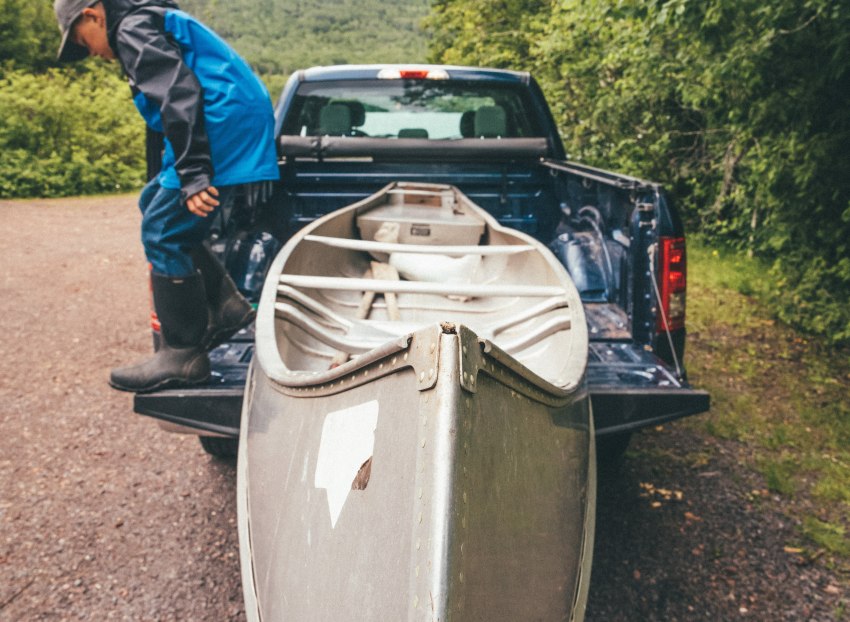
The majority of modern canoes you see on the market (check our list of the best models) are now made from some form of plastic, usually either rotomolded polyethylene or thermoformed ABS sheets. Then, there are those hardened traditionalists who swear by their handcrafted wooden canoes, and who can blame them. They’re beautiful – if fragile – boats.
But there’s a notable absence. There’s a grade of canoes that are ingrained in the youthful, adolescent summers across the US. Aluminum canoes are popular in summer camps because they will last for generations. But there’s more to these canoes than just their robustness. So why were aluminum canoes built and what’s their place in a modern market where the plastic canoe reigns supreme?
But first, let’s look at the best aluminum canoes available on the market today.
As an affiliate of Amazon and other retailers, we may earn a small commission when you buy via our links, at no additional cost to you. Thank you!
At a Glance: Best Aluminum Canoes
Best All-Around: Michi-Craft T-15 Aluminum Canoe
Best for Sportsmen: Waterstream X-13 Wide Transom Canoe
Best for Families: Grumman 17’ Double-End
Best Solo Canoe: Osagian 12 Solo.1
The Best Aluminum Canoes Reviewed
Best All-Around: Michi-Craft T-15 Aluminum Canoe
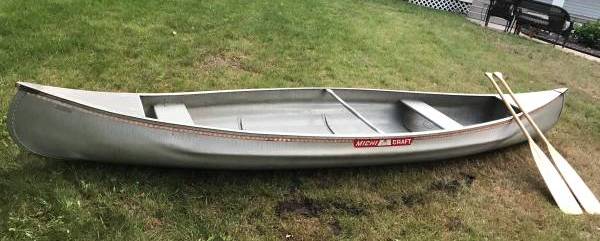
Length: 15 ft. (4.57 m)
Width: 36 in. (91 cm)
Weight: 71 lbs. (32 kg)
Capacity: 650 lbs. (295 kg)
The Michi-Craft T-15 is an all-around canoe that is used across the US by outfitters, summer camps, and lodges. These twin-directional canoes can comfortably accommodate two large adults and plenty of canoeing equipment. Alternatively, you can load up the whole family in the canoe, with plenty of onboard space for up to four paddlers so long as you don’t exceed the capacity limit.
The T-15 has inbuilt outrigger-style wings on either side. These bulges in the aluminum are specially designed to widen the beam of the canoe and increase stability. This has a notable impact on the secondary stability of the canoe when it’s leant over or close to capsizing.
Pros:
- High onboard capacity
- Outrigger style design for increased stability
Cons:
- Heavy
- Extra width makes this canoe sluggish
Best for Sportsmen: Waterstream X-13 Wide Transom Canoe
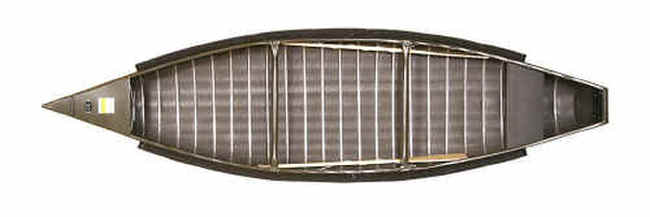
Length: 13 ft. (3.96 m)
Width: 38 in. (96 cm)
Weight: 72 lbs. (32.6 kg)
Capacity: 555 lbs. (251.7 kg)
The Waterstream X-13 Wide Transom Canoe is designed to be near enough impossible to capsize and sink. The aluminum is lined with eathafoam so that even if you fully submerge your X013 Wide Transom Canoe, it will continue to float upright. In fact, thanks to the foam outriggers, you will still be able to climb back on board so you can begin to bail the water back out.
This square-backed canoe is designed for hunters and anglers in mind. You can stand, walk around, cast, and shoot from this canoe with full confidence in your ability to stay upright. Thanks to this stability, it also makes for a great family canoe, where youngsters can move around the boat and gain water confidence.
RELATED: Best Fishing Canoes: Ultimate Guide and Reviews
Pros:
- Stays afloat even when full of water
- Hard to capsize
- Wide and incredibly stable
- Motor compatible
- Short and easy to store
Cons:
- The wide, flat hull drags in the water
Best for Families: Grumman 17’ Double-End

Length: 17 ft. (5.18 m)
Width: 36 in. (91 cm)
Weight: 75 lbs. (34 kg)
Capacity: 755 lbs. (342.5 kg)
Sometimes, the original is still the best. The Grumman 17’ Double-End canoe still represents one of the best aluminum canoes on the market. This double-end canoe follows traditional lines of how a canoe should look and perform. With a shallow draft and stable design, this canoe is suited to families taking to the water for the first time who want to instill confidence in their young paddlers.
Those young paddlers will then be able to grow into the canoe and it will take them into almost any environment. This canoe has a low profile, less affected by the wind and more capable when it comes to tripping than other models on this list. That shallow draft that helps to keep it so stable also prevents you from catching every rock on your way downriver.
Pros:
- Shallow draft for stability and white water suitability
- Low profile suits younger paddlers
- Wide and stable
- High capacity
Cons:
- Expensive
- Heavy
Best Solo Canoe: Osagian 12 Solo.1

Length: 12 ft. (3.66 m)
Width: 30 in. (76 cm)
Weight: 46 lbs. (21 kg)
Capacity: 399 lbs. (181 kg)
The Osagian 12 Solo.1 is a one-person aluminum canoe that you can comfortably carry to the water on your own before heading out on your solo adventure. This canoe features a fully folding seat and backrest system, designed to keep you out on the water all day. Adjustable foot pegs help you to maintain your posture and prevent you from straining your back.
Although this canoe is considerably narrower than others on this list, it’s stable enough for recreational canoeing and angling. This narrower build allows it to cruise more easily across the water, gaining reasonable speeds for a 12 ft. canoe. Buoyancy chambers at either end prevent this canoe from filling in the event of a capsize.
See other great solo canoe models described in our dedicated article.
Pros:
- Comfortable folding seat and footpegs
- Buoyancy chambers
- Light enough to carry on your own
- High capacity
Cons:
- Narrow and less stable than other canoes on this list
How Aluminum Came to Be the Canoe Material of Choice
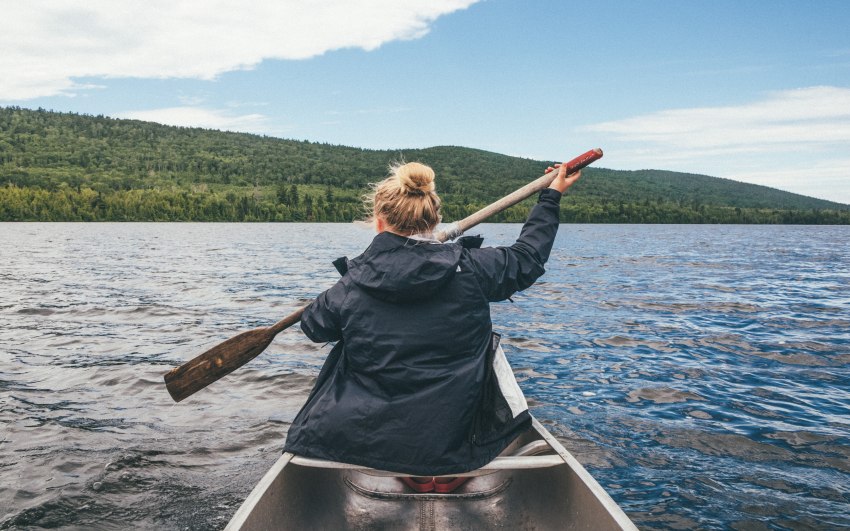
The best inventions tend to be borne of necessity and this is true of aluminum canoes. That said, the first manufacturer – Grumman – was and still is something of an expert in aluminum manufacturing. Grumman was a leading producer of military aircraft for the U.S. Air Force during WWII and has since been involved in aviation at all levels – including the manufacture of two space shuttles.
As WWII drew to a close, Grumman was looking for ways to diversify their design to avoid laying off any more of the workforce than was necessary. One of the many designs they hit upon was the aluminum canoe. At the time, wooden canoes ruled the market, but most models were tipping the scales at over 60 lbs., while the first Grumman weighed in at just 38 lbs.
They weren’t just lighter though, the all-new Grumman canoes were durable. They were able to withstand use and abuse, river canoeing, and didn’t require continual running repairs. It wasn’t long before competitors to Grumman moved in on the market and capitalized on it.
With modern design and plastic canoes, the aluminum canoe has fallen down the pecking order slightly. They’re not quite as refined nor as easy to mass produce as their plastic counterparts. But there are still those who hold a candle for the aluminum canoe and revere them for their strength and, just perhaps, just a touch of nostalgia.
Benefits of Aluminum Canoes
Durable
Aluminum canoes are still the most durable canoes on the market, both on and off the water. There are summer camps that have been using the same aluminum canoes for decades and families that have passed their canoe from generation to generation.
These canoes withstand rocks and white water, as well as all of the hardships that they get thrown at them when youngsters are learning to canoe. Even better though, they don’t need any special storage setups. You can leave an aluminum canoe out in all weather and it will be fine – they withstand dust, rain, snow, and UV damage.
Repairable
If you do somehow manage to break an aluminum canoe, they’re straightforward to repair. Dents can usually be bashed back out with a rubber mallet. If you manage to split the canoe, you can either weld the split directly or weld a patch of aluminum over the hole and your canoe will be ready to go again. Of course, these aren’t ideal for wilderness repairs on a trip, but in that situation, you can use the same repair kits as you would on a modern canoe.
Recyclable
Aluminum canoes are the eco-friendly choice of canoes. For a start, they going to outlast almost every other canoe – probably several times – reducing the number of raw materials that are being used. Then there’s the fact that aluminum is fully recyclable. When the time finally comes to part ways with your faithful aluminum canoe, you will have any number of scrap metal merchants willing to take it off your hands.
Drawbacks of Aluminum Canoes
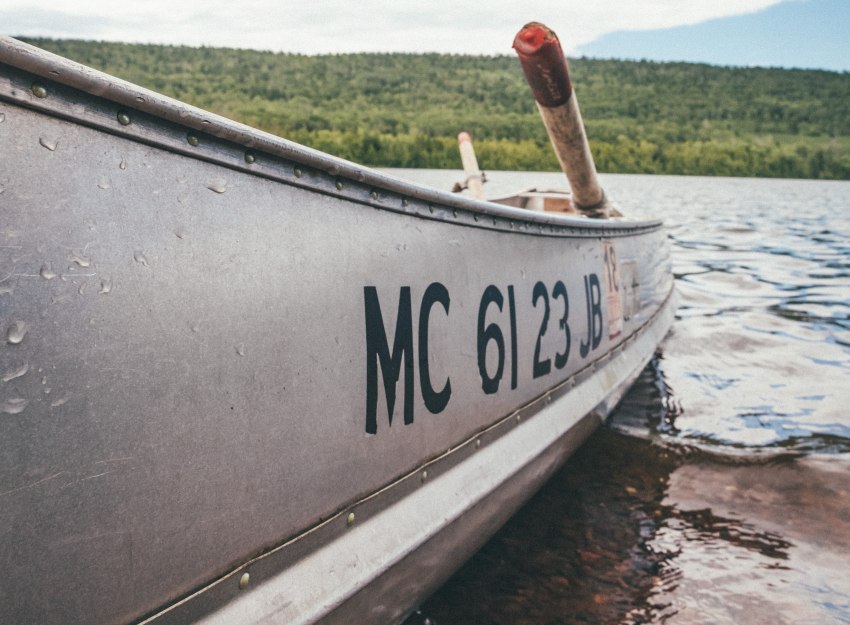
Noisy
When you bump your paddle off the side of an aluminum canoe, the sound reverberates around the whole boat. This can be useful if you want to scare off bears or other wildlife. Mostly, though, it’s just irritating. If you’re an angler or a sportsman, an accidental knock on your canoe can scare away your catch or target.
Expensive
It’s probably best to look at an aluminum canoe as an investment that will last you and your family for years to come. They are not cheap. If you want a budget canoe, rotomolded plastic is the best choice. However, if you pay the money now, you will have a canoe that could last you the rest of your life.
Heavy
Like all canoes, aluminum canoes vary in their weight. When they came on the market, they were by far the lightest option. But materials have advanced since then and they are now towards the heavier end of canoes available. This makes them sluggish on the water and less suited to long trips, especially those with portages.
Stick to Rocks
When you ground out on a river, you want your canoe to slide effortlessly off the rocks so you can carry on downstream. Aluminum canoes just don’t do this, though. They seem to stick to rocks and make life difficult freeing them, which can result in difficult situations as you unstick yourself mid-flow.
Cold
Aluminum soaks up the temperature around it and in the winter, these canoes can be cold. When you first sit down in them, your butt is going to feel how cold that seat is and every time you touch the canoe, you’re going to feel like you’re hands are going to stick to them. This isn’t the biggest issue, but if you paddle regularly in winter you might wish you had bought a plastic canoe instead.
Unrefined
Aluminum canoes just don’t tend to be quite as well refined as more modern materials. Their hulls are usually toward the recreational end of the market, lacking the intricate designs of some of the more advanced white water or tripping canoes.
The seats are usually a plain slab of aluminum with no ventilation or drainage, so your butt can end up really warm and uncomfortable if you’re out in hot weather. Sure, aluminum canoes are comfortable and great for recreational paddling but can lack the features you need for specific environments.
Where can you Paddle an Aluminum Canoe?
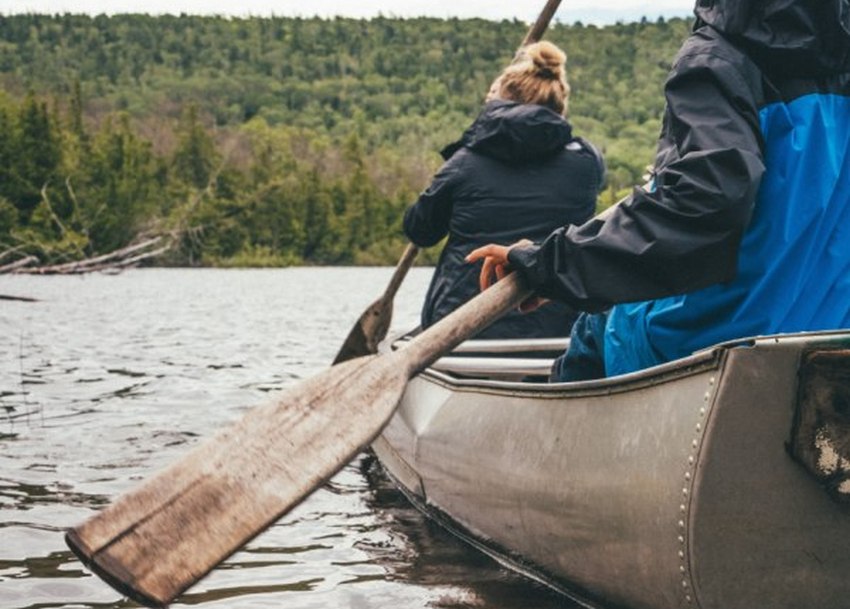
You can paddle an aluminum canoe just about anywhere that you would take a plastic canoe. They’re best suited to recreational trips where their slower top speed won’t affect your journey. That said, an aluminum canoe makes for a durable tripping canoe, though they’re best suited to journeys with limited portaging.
Aluminum canoes are also great on the river, where they aren’t overly affected if you bounce off rocks along the way. They do have a tendency to stick themselves to rocks if you try to slide over the top of them, but so long as you know this you can avoid them for the most part.
Should You Buy an Aluminum Canoe?
After years of plastic canoes, there are some canoeists that are going back to aluminum. They tend to be best suited to recreational paddlers, but the durability makes them a popular favorite among families, or those taking their grandchildren out on the water.
Aluminum canoes are also suitable for anglers and hunters. So long as you’re aware that they can be noisy, these canoes can often haul huge loads and will stand up against the constant wear of tackle, hooks, and any catches or kills you might bring aboard.
If you’re looking for a canoe that will last long enough to become an heirloom that you can hand to your kids, or even further down the generational ladder, then look no further than the aluminum canoe.









